When you think of reclaimed wood, you probably picture old barns and factories being dismantled. That’s where Wikipedia says reclaimed wood comes from, and that’s part of the story. But Portland’s Viridian Reclaimed Wood got it’s start when its founders discovered an unseen waste stream that was literally sending truckloads of tropical hardwoods to the landfill every week. Now that’s what I call an appalling waste.
One day in 2004, co-founder Pierce Henley got curious about a weird heavy blackish post lying in his backyard in Scappoose, Oregon. Being a woodworker, he ran it through his saw to see the inside, and saw beautiful figured oak that didn’t look quite like any oak species he knew. Since the previous tenant was a stevedore, Pierce eventually inquired at the Port of Portland, and learned that heavy metal cargoes are shipped on rough-sawn hardwood “dunnage” as padding—and this was all coming out of ship’s hulls mixed with plastic and metal garbage, and going straight to landfill.
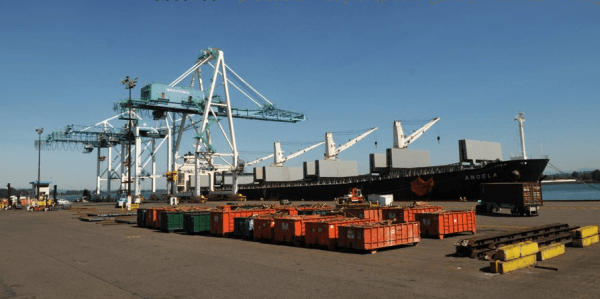
The familiar pallets are made of thinner, flimsier wood for use under stacks of cartons, and they’re full of nails. Dunnage for the heavy stuff is dimensional hardwood, and often free of nails, but it gets very stained and beat up.
Since Korea and Japan have no hardwood resource, steel rails and beams from those countries come in on tropical hardwoods from Indonesia. (They end up as Viridian’s most popular product line, Jakarta.) Wind turbines from Germany come in on European beech. And that original figured oak turned out to be fishtail oak, harvested in Mexico exclusively for dunnage.
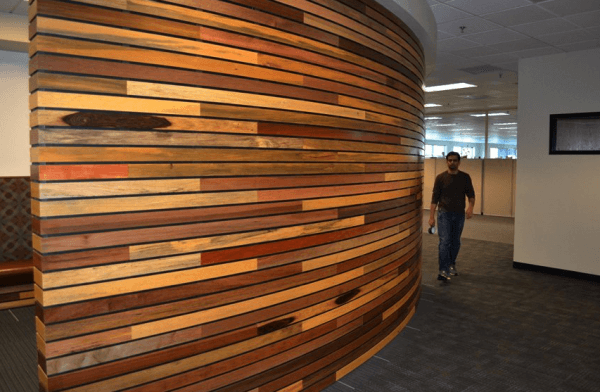
Eight years later, Viridian has a contract for basically all the waste coming out of ships unloaded in Portland. Sorting is the chief activity at their plant. Plastic and metal are sent off for recycling elsewhere, unusable wood goes to be ground up for the city’s compost heaps, and then the best-to-middling wood is sorted into a dozen categories that become different reclaimed products: siding, decking, flooring, glulam beams, veneer sheets. Some products look perfect, others are rough or have bolt holes, circular saw marks, or rhythmic black stains from cargo.
After sorting the wood is processed by specialist partner companies in the Portland area, and then the products come back to Viridian for marketing. In engineered products, reclaimed veneer is glued to FSC-certified wood using formaldehyde-free glue.
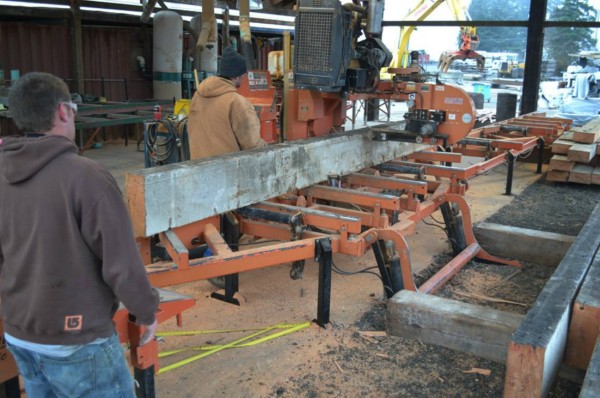
The company reassured me that no pests or pathogens are spread via their process. Heat treatment is required in the country of origin before shipping, but frankly, that may not be enforced reliably; so Viridian kiln-dries the wood all over again.
Viridian gets lesser quantities of wood from a variety of sources (but no barns). School bleachers and gym floors. Warehouse beams. Redwood wine tanks. Truck beds, which are thick wooden planks that have to be replaced after 500,000 miles. Rail car beds. Neighborhood trees when they have to be cut down. And old “buckskin” redwood stumps from the heyday of redwood logging: the loggers would cut redwoods ten to twenty feet up, to avoid the burled and buttressed bases which were just too huge to get a two-man saw through. A hundred years later, the outer sapwood has rotted away from the huge stumps but the heartwood is still in fine shape.
The redwood stumps and neighborhood trees are technically “salvage,” not reclaimed, but they earn LEED points either way.
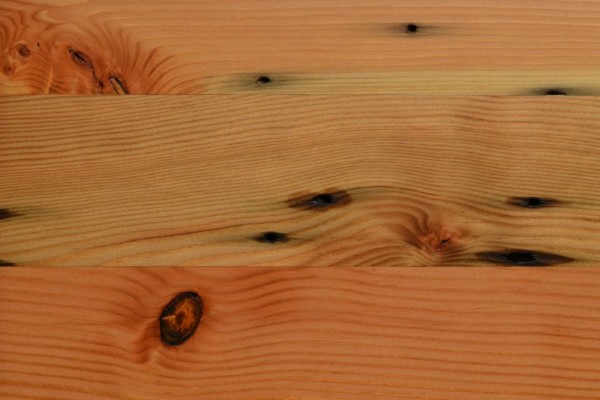
Viridian’s veneer lines are redwood; black walnut from neighborhood trees; and Douglas-fir from warehouse beams. The Douglas-fir is of a clear, tight-grained quality that you can hardly find today as new wood; it comes from old-growth timber that isn’t being logged today, but was abundant and cheap back when those warehouses were built.
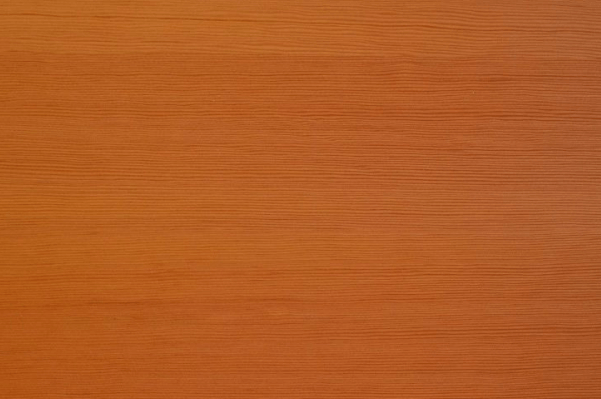
BuildingGreen recognized Viridian as one of the Top Ten Green Building Products on their 2012 list.
Viridian’s products are as gorgeous as they are virtuous. They do cost more than the run of the mill. If you just want old weathered boards, look elsewhere.
Today the owners (along with many competitors around the country) are busy finding new waste streams to upcycle, but it’s hard to imagine that supply is going to keep up with demand indefinitely.